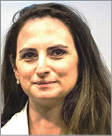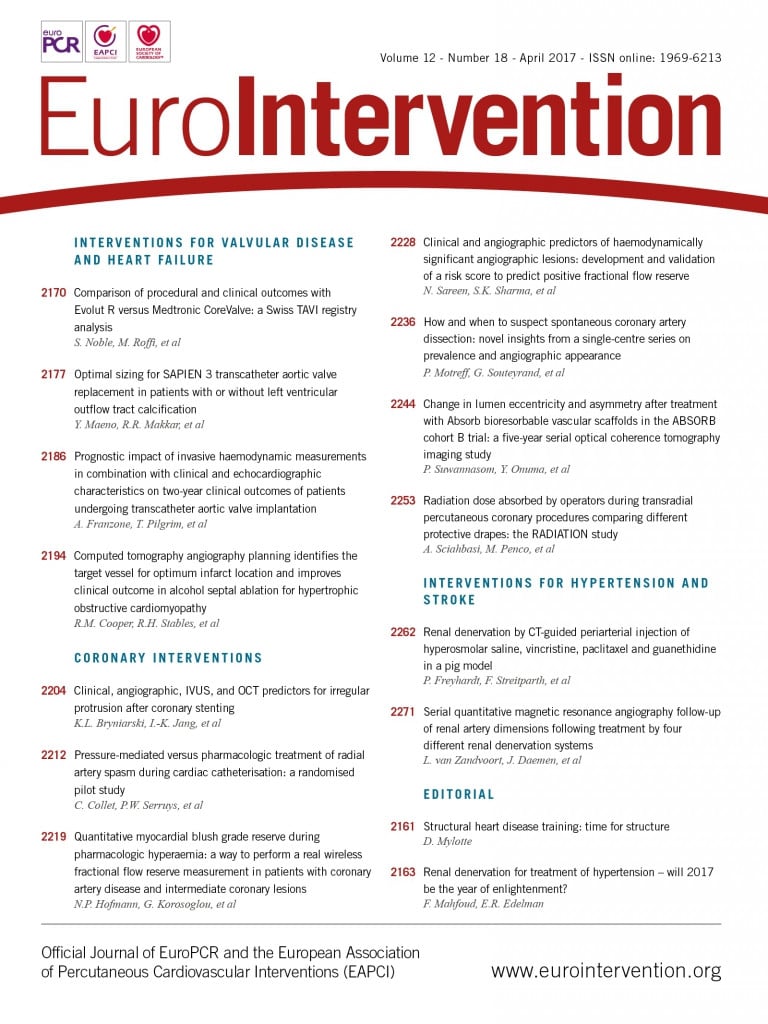Radiation exposure in European catheterisation laboratories – an initiative from the EAPCI Women Committee
Emanuela Piccaluga, Stephane Manzo
A survey published last year by Capranzano et al1 on behalf of the EAPCI showed that both women and men consider the burden of workload and the overall risk related to radiation exposure as the most important reasons restraining women from a career in interventional cardiology. Moreover, the “risk of a pregnancy” could discourage catheterisation laboratory directors from choosing young female cardiologists for fellowships and – above all – for a permanent position. Despite the fact that we are witnessing an increasing number of women in medical schools worldwide, the proportion of women entering interventional cardiology remains very low.
Among the different goals of the EAPCI Women Committee (WEAPCI) is a particular focus on identifying determinants of the current gender-related disparities in order to develop strategies for attaining gender equality in interventional cardiology. It is with this in mind that we have promoted the current web survey on radiation exposure in order to obtain an updated global picture about the workforce as well as current regulations and practices regarding radiation protection in different laboratories and European countries. To date this information has been lacking.
What are we looking for?
The survey will assess radiation-reducing strategies, including awareness programmes and protection tools used in each participating cathlab. Radiation measurement tools in use will also be assessed as well as angiographers available, types and timing of medical controls, and the regulations applied concerning the maximal accepted radiation dose, whether during or outside pregnancy. The survey will also assess the gender ratio of both catheterisation laboratory directors and medical and paramedical personnel working in cathlabs, according to the proportion of coronary/peripheral/structural and electrophysiological unit (EPU) procedures performed.
Early results
Preliminary analysis of data collected so far suggests that women represent a very low percentage of European interventional cardiologists and that they are younger than men, with fewer than 10% being cathlab directors. Radiation exposure during pregnancy appears controversial, with further data needed. Concerning one of the “hot topics” in radiation protection, the issue of cataracts among interventionalists, lead googles are available in many cathlabs, while the use of an eye dosimeter seems quite rare.
In order to ensure a complete and accurate picture of the current situation across Europe – and take a stand on the issue of radiation exposure that is highly important to us all – we urge all cathlab directors to complete the survey via the link shown at right by 15 April 2017!

Emanuela Piccaluga, MD; Cardiology Dept., ASST Grande Ospedale Metropolitano Niguarda, Milan, Italy

Stéphane Manzo-Silberman, MD;
Département de Cardiologie, Hôpital Lariboisière, Université Paris VII, INSERM UMRS 942, Paris, France
![]()
Take part in the survey on Radiation Exposure in European Catheterisation Laboratories. An initiative from the EAPCI Women Committee. Thank you for your participation. https://www.surveymonkey.com/r/XFJ7CTD
| NEWS ■ EAPCI General Assembly at EuroPCR 2017! Thursday 18 May, 10:30-12:00, Room 343. ■ Attend and find out about the latest developments of our Association. EAPCI voting members will be invited to vote on a proposal for a new mission for the Association. ■ NEW! Register for the free EAPCI webinar on 23 June “Focus on bleeding management strategy in patients under oral anticoagulation after PCI – from randomized clinical trials to the individual patient”. With Dr R. Byrne, Prof. M. Roffi and Prof. A. Baumbach. Free for everyone, register now! http://www.escardio.org/Education/E-Learning/Webinars/Interventional-cardiology/focus-on-bleeding-management-strategy-in-patients-under-oral-anticoagulation-after-pci-from-randomized-clinical-trials-to-the-individual-patient |

